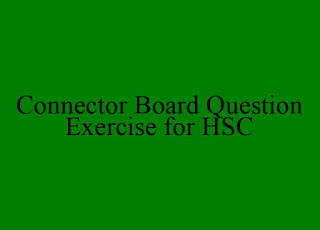Religious elements in Dylan Thomas poetry
Mention and discuss the religious elements in Dylan Thomas poem
In spite of Thomas's obsessive concern with the human body and with sexuality, in spite of the recurrent themes of birth, copulation, and death in his poems, it is possible to view his vision as being essentially religious. Of course, Thomas cannot be regarded as a religious poet in the sense in which Herbert and Vaughan were religious poets. Thomas's poetry is not devotional poetry; it is not the poetry of worship. Thomas is not a writer of hymns in praise of a personal God. He is religious in a broad sense.
Love of Life and the Particulars of Life
In a broad sense, a religious poet is primarily a celebrator, a celebrator in the sense of one who celebrates the Creation, and more particularly the human condition. Such a poet will see himself, and man in general, as a metaphor or analogy of the world. The human imagination will for him be the image of the divine imagination. In both man and the world such a poet will perceive a force of love or creation which is more divine than either man or the world, and a force of death or destruction which is more terrific than man or the world.
Although his ultimate vision is the tragic one of creation through suffering, his ultimate sense will be of joy. In the act of love, which is the central act of creation, he will see the force of love in man and the world merge mysteriously with the force of death. The emotion which inspires such a poet will be compassion, or love of life and the particulars of life.
The Identity of All Forms of Life
The poem, The Force That Through the Green Fuse, expresses the poet's sense of the unity of man with the vast processes of Nature, and the identity of all forms of life. Now such a feeling behind the poem can justly be described as religious. The identity of man and Nature is the chief concern of this poem, even though in the last seven lines there is an emphasis upon death. The main idea in the poem is that the creative powers of Nature and its destructive processes are the same in the great vegetative world and in man.
In that sense there is an identification of these two aspects of the This view could even be termed "pantheism", even though this is not the kind of pantheism in which Wordsworth believed, because Wordsworth saw in the underlying principle of the universe a divine character and ho omphasized the benevolent aspect of that principle. In any case, the theme of oneness in this particular poem is an as creation of one underlying principle of existence. The force which drives the flower also drives the poet's green age, and the force which blasts the roots of trees is also tho poet's destroyer.
The Religious Imagery in After the Funerals
After the Funeral is a wholly religious poem. After giving us some preliminary details about the funeral and the hypocrisy of the mourners, the poet here concentrates on the character of the dead woman whoso “fountain heart” irrigated the “parched worlds of Wales”. Ann Jones had such an abundance of love in her heart that the poet wants to call all tho scas to offer their homage to her and all the woods to sing songs in praise of her. The poet regards the woods as a kind of chapel where a religious ceremony would be held in honour of the dead woman.
He visualizes four birds who will fly over her, making the sigo of the cross in order to bless her spirit. All this is religious imagery. And the poet goes on to talk about the dignity of this woman in having led a laborious life. He tells us that her "scrubbed and sour humble hands lie with religion in their cramp". The poet claims that he has the power even to hiring the stuffed fox to life and to revivify the stalc fern. The resurrected fox will utter the word "love" which symbolizes the dead woman. The whole poem is thus a religious tribute to the dead woman.
Religious Statements in A Refusal to Mourn
A Refusal to Mourn is also essentially a religious poem. Only a man with a, religious vision will assert that the dead child ha returned to the primal elements. Only a man with a religious vision will refuse to mourn the death of this child or to write an clergy on the occasion. To write an clergy will mean to “blaspheme down the stations of the breath.” Furthermore, we have religious imagery in “Zion of the water bead” ana “the synagogue of the car of corn”. The words “Zion” and “synagogue” lend a sacramental quality to the poem and enhance its religious appeal.
But the most religious statement of the poem comes in the last line : “After the first death, there is no other,” Thomas means to say that, though the child has departed from the earth, it has attained a perpetual life beyond the grave. Although this is a highly moving and-poignant poem because we cannot ignore the sad event of a child's death, the poet offers a deep consolation to us by his religious sentiments. It Is a poem which was begotten by religious faith and which also inspires religious faith in the reader.
An Attitude of Reverence Towards Nature
Poem in October too has its religious moments. In the very opening stanza we read about the “heron priested shore and the water praying”. The tone in which the poet builds up imagery in this poem suggests a reverent attitude towards Nature. An attitude of reverence towards Nature is necessarily indicative of the writer's realization of the sanctity of the universe. bere talks of a “springful of larks in a rolling cloud”, of the “whisthng black - birds”, the "rain - wringing wind", the blooming gardens, etc.
Recollecting his childhood, the poet imagines himself walking with his mother through "the parables of sunlight" and "the legends of the green chapels". Here, again, the woods are 1egarded by him as chapels, and this is again a sacramental image. The poem concludes with a prayer that during the next year too the poet should continue to sing his "heart's truth". The poem is written in a mood of ecstasy which surely has a religious basis.
Religious Sentiments in Fern Hill
Fern Hill is another poem expressing religious sentiments, even though the theme here is the glory of childhood. An explicitly religious feeling enters the poem when the writer says : And the sabbath rang slowly In the pebbles of the holy streams. The original innocence of Adam and Eve is invoked in the fourth stanza where we also have a picture of the horses walking tow:rds the "fields of praise". There is a sacramental quality in the image of the "fields of praise", meaning fields which stir the feeling of thankfulness to God who created the fields.
The idea of the divine innocence of childhood is repeated in the phrase: "the lamb white days". The basic idea in the poem, then, is that a child awakening to the beauty of Nature has a divine significance, and that all human joy is holy. All Pervasive Biblical Imagery Many other poems by Thomas can be shown as having a religious quality. Thomas was greatly influenced by the Bible, and Biblical imagery is all pervasive in his work. This does not of course, mean that Thomas advocated in any particular theology.
But the Biblical imagery and the numerous Biblical allusions do lend a sacred character to certain poems. Some Christian concepts also figure in his poems. For instance, the Ballad of the Long-Legged Bait has as its theme the idea that salvation must be won through mortification of the flesh. la the fiery imagination of Thoms the process of purification becomes the strange voyage of a lone: fisherman. The legend which forms the basis of this poem is the Book of Revelation.
Two Other Religious Poems
In another poem, Over Sir John's Hill, Thomas is seen at his compassionate best; here he grieves for a world pledged to war, for the weak, for the innocent, for the many. The poet is here concerned mainly with the quality of mercy. In a poem called Vision and Prayer, Thomas successfully handles the theme of the identity of himself, everyman, and Christ. He imagines himself addressing the unborn Christ who, in his mother's womb, seems separated from himself by a wall thin as a wren's bone. The poet identifies himself with the glory and suffering of Christ's redemptive career. The poet prays that Christ should remain in the womb, because men are indifferent and wanton and not worth redemption.
The Religious Sonnets of Dylan Thomas poetry
Then there are the Sonnets beginning with Altarwise by Owl-light. Although there is a good deal of difference among critics about the real meaning of these poems, the right approach seems to be that they are a deeply moving statement of religious perplexity concluding in spiritual certainty. The sonnets reflect the wonder, awe, doubt, and faith of a young poet who could not reconcile the capacity for divine pity with the necessity of human sacrifice. The paradox of the Incarnation and Passion affected Thomas early in his career. of a fearful struggle of the poet with his God.
The first seven sonnets are earth bound, as if the Word were imprisoned in clay. In the eighth sonnet Thomas wrestles with faith as he sees in the Crucifixion the triumph of eternity over pain. The ninth sonnet wavers between weariness and expectancy. In the last sonnet Thomas's soul is brushed by an angel's wing and, in the closing lines of the poem, prophecy and faith ring of the green garden and the everlasting mercy.
The Attitude of Affirmation
The religious vision of Thomas can be demonstrated in another way also. A very perceptive critic points out Thomas's carly work is principally concerned with themes of revolt, the middle work with themes and situations of reflection and debate, the late work with themes of praise and consent. According to this analysis, Thomas's late work shows calm, a spirit of acceptance, and a singing praise or the world. The argument of his poetry moves through antithesis after antithesis toward its final synthesis of affirmation.
It is this attitude of affirmation which constitutes the religious vision. The sun roars for Thomas in the last splendid poems of his life. Poem in October, Fern Hill, In Country Sleep, Over Sir John's Hill, Poem On His Birthday, and In the While Glant's Thigh, all celebrate the joy of life. Thomas rejected and outgrew his obsession with the horror of death and tho evil of sex. He also rejected traditional Christianity, but ho learned to sec Nature as holy, faith in life as essential, and love as the best immortality.



